Papilio pilumnus
A likewise local species, found mainly from Southeastern USA to western El Salvador and Honduras. A very beautiful swallowtail, especially…
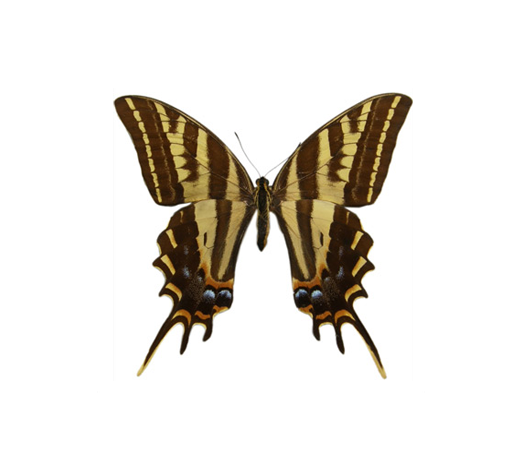
Papilio pilumnus
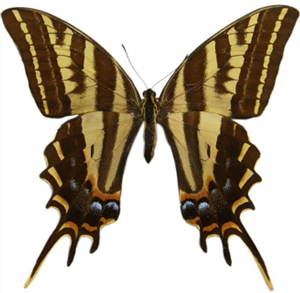
A likewise local species, found mainly from Southeastern USA to western El Salvador and Honduras. A very beautiful swallowtail, especially the larger females that often fly very close to the ground, surprisingly seeking yellow flowers that do not grow more thantwo feet high. It wilo sometimes soar several feet above the ground, but never as high as the larger two-tailed swallowtail (Papilio daunue or multicaudatus), which so far has only been observed once below the Montecristo cloud forest more than twenty years ago. This is not surprising, as the larger more stable populations of this butterfly, once fairly common in neighboiuring Guatemala, seem to have become locally extinct due to habitat loss.
Morpho peleides, known increasingly as Morpho helenor
Without a doubt the most fequently flown morpho in exhibits. It is also likely the morpho that flies best, given…
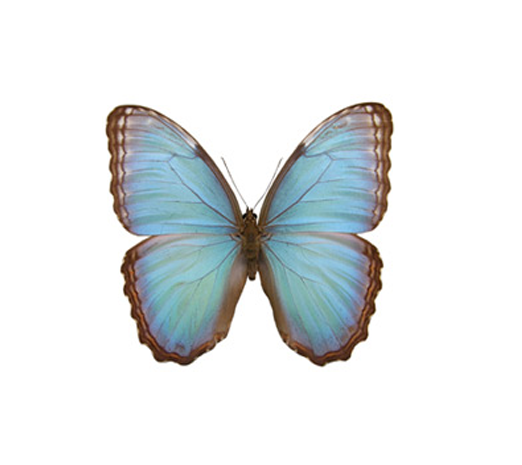
Morpho peleides, known increasingly as Morpho helenor
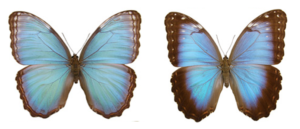
Without a doubt the most fequently flown morpho in exhibits. It is also likely the morpho that flies best, given their habit of flying close to the ground. Males will often fly along paths in the forest, while the females are more seclusive, usually remaining in the vegetation close to these paths when they have not as yet mated. Both sexes come to rotting fruit placed on the ground, often becoming a little drunk and easier to catch. Found from sea level to over 2000 m.a.s.l. in the cloud forests.
Papilio torquatus
A strikingly dimorphic species, in which the females apparently mimic females of certain Parides, and apparently fly “knowingly” of this…
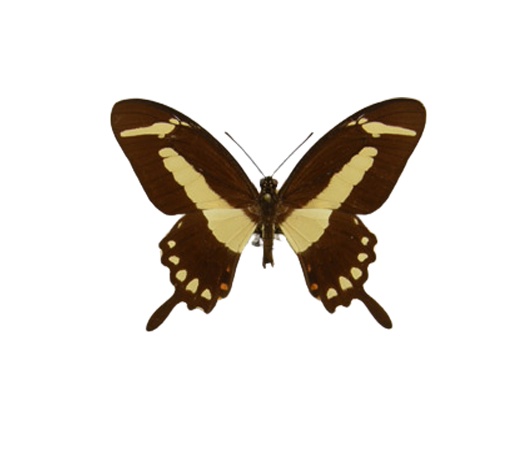
Papilio torquatus
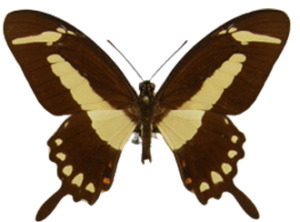 |
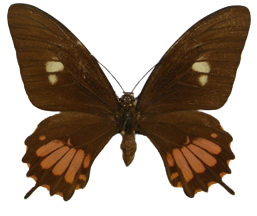 |
A strikingly dimorphic species, in which the females apparently mimic females of certain Parides, and apparently fly “knowingly” of this protection (Parides feed on toxic aristolochia vines), but one still cringes when viewing the females of torquatus flying at ground leverl within the shade of the forest, seeking young sapplings of its rutacea food plant. Most swallowtails of the genus Papilio lay eggs mugh higher up on leaves in full sunlight– young or mature . Very local in El Salvador, like several species known only from in and around the El Imposible Forest.
Prepona omphale
The two butterflies of the genus Prepona (the other one being Prepona brooksiana diazina) are the most colorful of the…
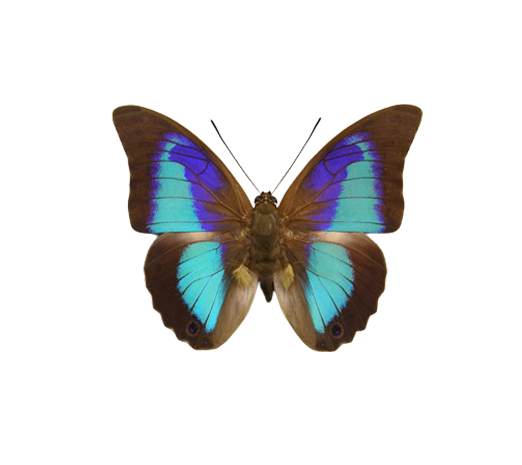
Prepona omphale
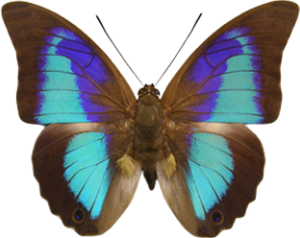
The two butterflies of the genus Prepona (the other one being Prepona brooksiana diazina) are the most colorful of the Salvadoran Preponas, with the deep purple-blue on the forewing contrasting with the light blue band across both wings in the males. This is also the most widely distributed of the two, found from sea level to about 1000 m.a.s.l. , which may be due to its food plant being a popular shade tree in coffee plantations. However, it is never very common. Flies very fast, and the males especially will come to the faces of people who are perspiring!
Morpho polyphemus
Together with the royal owl (Caligo uranus), the largest butterflies of El Salvador. The white morpho is a mid-altitude flier,…
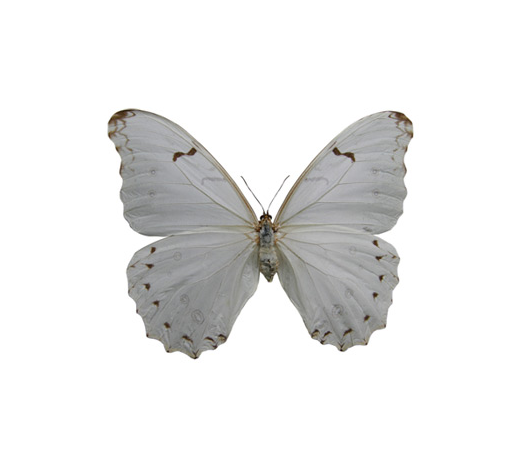
Morpho polyphemus
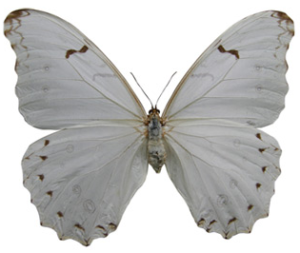
Together with the royal owl (Caligo uranus), the largest butterflies of El Salvador. The white morpho is a mid-altitude flier, unlike the blue morpho which flies close to the ground. Especially in the case of the females, one is amazed to see so small a body moving so large wings. Unlike the blue morpho (Norpho helenor or peleides), both males and females fly along routes that seem to be marked with invisible (to humans) traffic signals: “Turn right and up here; to the left and straight here . . .etc.” Also, in nature, they fly only during two, at times three period of the year: late Marcg to early May; late August and September and, not too fequently, in December. The blue morpho fliers all year long, from sea level to over 2000 m.a.s.l. in the cloud forest. The hairs on the body of the last stages caterpillars are highly irritating, but if handled with care, can be oved from one plant to another with no ill effects.
Doxocopa callianira
The male purple emperors of El Salvador are by far more often seen than the females. The females of this…
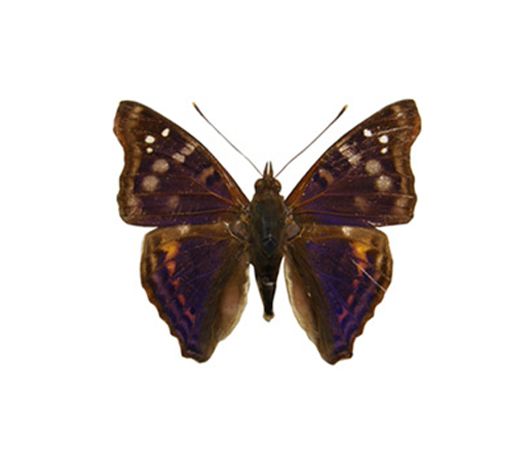
Doxocopa callianira
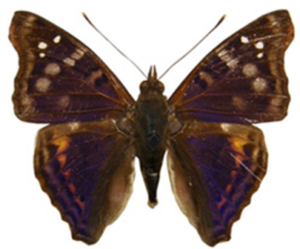 |
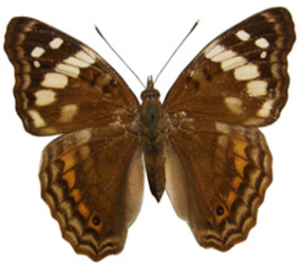 |
The male purple emperors of El Salvador are by far more often seen than the females. The females of this species in particular are very rarely seen. The reason was discovered several years ago, when it was found to be an inhabitant of canopy flowers, which are normally very small white or creamish – i.e. very wind resistant – and develope in clumps or close proximity, which allows butterflies to walk from flower to flower rather than fly. After more than 30 years of only seeing 2 damaged females, 5 perfect specimens were seen simultaneously from a rope web that had been set up in a medium height tree!
